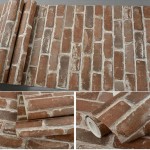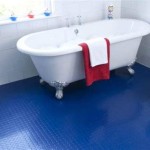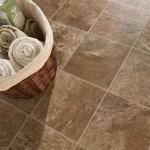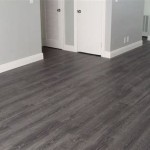Installing Hardwood Floors on Concrete Slab
Installing hardwood floors on a concrete slab presents unique challenges compared to traditional wood subfloors. Concrete is inherently less forgiving than wood, and its cold, hard nature can create complications with floor movement, moisture, and sound transmission. However, with careful planning and proper installation techniques, it is possible to achieve a beautiful and durable hardwood floor on a concrete slab.
Preparing the Concrete Slab
The first step in installing hardwood floors on a concrete slab is to properly prepare the surface. This involves leveling, cleaning, and isolating the slab from moisture. Unevenness in the concrete can lead to floor squeaks and uneven wear, while dirt and debris can interfere with the adhesive bond. Moisture can damage the hardwood, causing warping, buckling, and decay.
Leveling the concrete slab is crucial for a smooth and even floor. If the slab has significant variations in height, it may be necessary to use a self-leveling compound. This compound is poured over the surface and allowed to dry, creating a level and smooth base for the hardwood flooring. If the variations are minor, you can use a thin layer of patching compound to fill in cracks and depressions.
After leveling, the concrete slab must be thoroughly cleaned to remove any dirt, dust, grease, or other contaminants. Sweeping and vacuuming are essential, and a damp mop can be used to remove any remaining debris. The slab should then be allowed to dry completely before proceeding.
Moisture control is essential when installing hardwood floors on a concrete slab. Concrete can naturally absorb moisture from the ground, and this moisture can damage the wood. To prevent this, a moisture barrier should be installed over the concrete slab. This barrier can be a simple layer of polyethylene sheeting or a more sophisticated system like a vapor retarder membrane. The moisture barrier should be securely taped at the seams to prevent moisture from seeping in.
Choosing the Right Underlayment
Once the concrete slab is properly prepared, the next step is to choose the right underlayment. Underlayment is a layer of material placed between the concrete and the hardwood flooring that provides cushioning, sound insulation, and moisture protection.
There are several types of underlayment available, each with its own advantages and disadvantages. Some common options include:
- Foam underlayment: This is a popular choice due to its affordability and ease of installation. Foam underlayment provides good cushioning and sound insulation, but it may not be as durable as other options.
- Cork underlayment: Cork is a natural material that provides excellent cushioning and sound insulation. It is also resistant to mold and mildew, making it a good choice for areas prone to moisture.
- Rubber underlayment: Rubber underlayment is very durable and provides excellent sound insulation. However, it can be more expensive than other options.
The best choice of underlayment will depend on the specific needs of the project. For example, if sound insulation is a priority, a rubber underlayment may be the best choice. If cost is a concern, foam underlayment may be a more affordable option.
Installing the Hardwood Flooring
Once the underlayment is in place, the hardwood flooring can be installed. There are two main methods for installing hardwood floors on a concrete slab: floating and glue-down.
Floating Installation
Floating installation involves installing the hardwood flooring without attaching it directly to the concrete. Instead, the planks are connected to each other using a tongue-and-groove system and allowed to "float" over the underlayment. This method is popular because it allows for some movement and expansion of the wood, reducing the risk of warping or buckling. However, it is important to note that floating installations can be more prone to noise and creaking.
Glue-Down Installation
Glue-down installation involves attaching the hardwood flooring directly to the concrete using a strong adhesive. This method is more stable than floating installation and can reduce noise and creaking. However, it requires a very smooth and level concrete slab to ensure a consistent bond. Additionally, glue-down installations are not as forgiving as floating installations when it comes to moisture expansion and contraction.
The specific installation method used will depend on the specific hardwood flooring and the preferences of the installer. It is important to consult with a qualified flooring professional to determine the best installation method for your project.

Guidelines For Hardwood Floor Installation Over Concrete

How To Install Tongue Groove Hardwood Floors Over Concrete

How To Install A Wood Subfloor Over Concrete Rona

Installing Hardwood Floors On Concrete

How Do I Install A Hardwood Floor On Concrete Slab The Carpet Guys

Wood Floors Over Concrete Dangers To Avoid

Can You Install A Wood Floor Over Concrete

How To Install A Wood Subfloor Over Concrete Rona

Fitting Hardwood Floor To Concrete Wood And Beyond Blog

Unlocking Timeless Beauty Installing Hardwood Flooring Over Concrete Slabs
Related Posts








